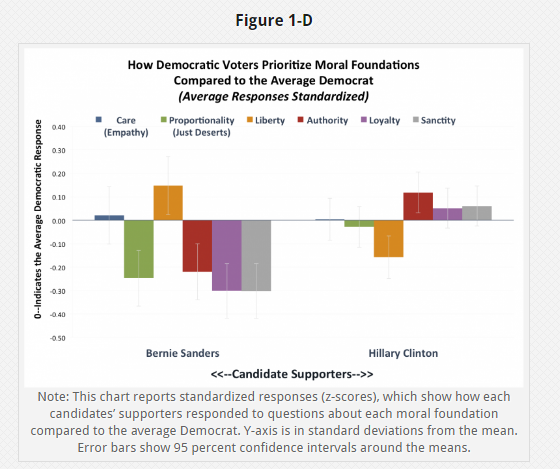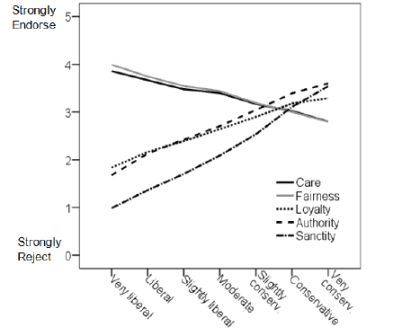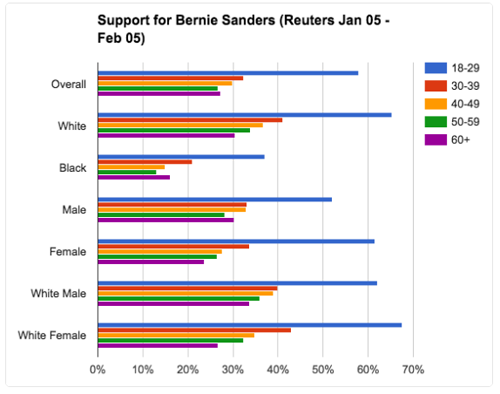Politico, of all creatures, actually did an analysis of the Hillary Victory Fund and reached the same conclusion I did.
In the days before Hillary Clinton launched an unprecedented big-money fundraising vehicle with state parties last summer, she vowed “to rebuild our party from the ground up,†proclaiming “when our state parties are strong, we win. That’s what will happen.”
But less than 1 percent of the $61 million raised by that effort has stayed in the state parties’ coffers, according to a POLITICO analysis of the latest Federal Election Commission filings.
I believe this is based on the end-of-March filing and not the one due recently. At the end of March, the HVF had taken in $60,568,530 , according to Open Secrets. I hope they follow up when they can analyze the April data.
I’ve been flogging this story for awhile, even though it barely qualifies as a “story” since it’s gotten no traction in news media. It has been obvious that something really underhanded has been going on with the Hillary Victory Fund, but nobody wants to notice.
I haven’t watched Maddow’s show for awhile, in large part since I haven’t had regular access to a television for awhile. But I was never so disappointed with her as when she brushed allegations about the Hillary Victory Fund aside without even looking at what was going on. I wrote about this here.
Here’s something I did not know. Politico reports,
The victory fund has transferred $3.8 million to the state parties, but almost all of that cash ($3.3 million, or 88 percent) was quickly transferred to the DNC, usually within a day or two, by the Clinton staffer who controls the committee, POLITICO’s analysis of the FEC records found.
Maddow was too complacent to even just look at public reports. This was not exactly like meeting Deep Throat in the parking garage. Just look at the public record.
By contrast, the victory fund has transferred $15.4 million to Clinton’s campaign and $5.7 million to the DNC, which will work closely with Clinton’s campaign if and when she becomes the party’s nominee. And most of the $23.3 million spent directly by the victory fund has gone towards expenses that appear to have directly benefited Clinton’s campaign, including $2.8 million for “salary and overhead†and $8.6 million for web advertising that mostly looks indistinguishable from Clinton campaign ads and that has helped Clinton build a network of small donors who will be critical in a general election expected to cost each side well in excess of $1 billion.
The Sanders campaign complained about the latter, and news media told him to shut up.
But it is perhaps more notable that the arrangement has prompted concerns among some participating state party officials and their allies. They grumble privately that Clinton is merely using them to subsidize her own operation, while her allies overstate her support for their parties and knock Sanders for not doing enough to help the party.
“It’s a one-sided benefit,†said an official with one participating state party. The official, like those with several other state parties, declined to talk about the arrangement on the record for fear of drawing the ire of the DNC and the Clinton campaign.
Hillary and Debbie must be keeping everybody’s grandmothers hostage in their basements. Everyone on the Democratic side is terrified of them.
Some fundraisers who work for state parties predict that the arrangement could actually hurt participating state parties. They worry that participating states that aren’t presidential battlegrounds and lack competitive Senate races could see very little return investment from the DNC or Clinton’s campaign, and are essentially acting as money laundering conduits for them. And for party committees in contested states, there’s another risk: they might find themselves unable to accept cash from rich donors whose checks to the victory fund counted towards their $10,000 donation limit to the state party in question — even if that party never got to spend the cash because it was transferred to the DNC.
Money laundering. Thank you.
Josh Schwerin, a spokesman for Clinton’s campaign, suggested that a handful of key state parties last month received another $700,000 in transfers from the victory fund, and enjoyed other benefits from it that will be detailed in subsequent FEC reports. (The latest reports only cover through the end of March.)…
… But Schwerin did not respond to follow-up questions about how much of the $700,000 in victory fund transfers to the state parties was subsequently transferred to the DNC.
It’s also a shell game. They keep moving money around and everybody gets dizzy and loses track of where it is.
Sanders’ campaign late last year signed a joint fundraising agreement with the DNC, but the committee has been largely inactive. Instead, after Sanders was chided by Clinton allies for not helping down-ballot Democrats, he sent out appeals to his vaunted email list that helped raise hundreds of thousands of dollars for a trio of progressive House candidates, who got to keep all the cash.
The Hillary Victory Fund, by contrast, allows the Clinton campaign to maintain tight control over the cash it raises and spends.
The article goes on to describe how the Supreme Court decision in McCutcheon vs. FEC (2014) made this operation possible. It goes way beyond the fundraising apparatus of any previous presidential campaign. But I’ll skip over that part for now.
According to the agreements signed by the participating committees, which were obtained by POLITICO, the money is required to be distributed, at least initially, based on a formula set forth in joint fundraising agreements signed by the participants. The first $2,700 goes to Clinton campaign, the next $33,400 goes to the DNC, and any remaining funds are to be distributed among the state parties.
But what happens to the cash after that initial distribution is left almost entirely to the discretion of the Clinton campaign. Its chief operating officer Beth Jones is the treasurer of the victory fund. And FEC filings show that within a day of most transfers from the victory fund to the state parties, identical sums were transferred from the state party accounts to the DNC, which Sanders’ supporters have accused of functioning as an adjunct of the Clinton campaign.
This scheme was in the works for a long time before the primaries started. Isn’t it odd that, in a year in which the Oval Office contained an open seat and the Republicans were expected to be in disarray, no “insider” Democrats stepped up to challenge Hillary Clinton? What are the odds, given that probably every politician in Washington has at least entertained fantasies of being POTUS? It’s as if they all got threats, in plain envelopes slipped under the office door — Nice grandma you have there …
For example, the Minnesota Democratic-Farmer-Labor Party received $43,500 from the victory fund on Nov. 2, only to transfer the same amount to the DNC that same day. The pattern repeated itself after the Minnesota party received transfers from the victory fund of $20,600 on Dec. 1 (the party sent the same amount to the DNC the next day) and $150,000 on Jan. 4 (it transferred the same amount to the DNC that day).
That means that Minnesota’s net gain from its participation in the victory fund was precisely $0 through the end of March. Meanwhile, the DNC pocketed an extra $214,100 in cash routed through Minnesota — much of which the DNC wouldn’t have been able to accept directly, since it came from donors who had mostly had already maxed out to the national party committee.
A similar pattern transpired with most of the participating state parties. As of March 31, only eight state parties (most of which were in battleground states such as Colorado, Florida, Nevada, New Hampshire and Virginia) had received more from the victory fund than was transferred from their accounts to the DNC.
This is the kind of analysis I couldn’t do myself, and it tells us that the Hillary Victory Fund is an even bigger scam than I thought it was.
Another area in which critics contend the Hillary Victory Fund appears to be pushing the bounds of joint fundraising is in its online advertising campaign, which has included many ads urging readers to “Stop Trump†or to support Clinton.
While joint fundraising committees are allowed to pay for ads as part of their fundraising efforts, they are forbidden from funding campaign advertising urging voters to vote for or against specific candidates. Those types of ads qualify as electioneering expenses that are supposed to be paid for directly by the campaign or by party committees.
Nice bit of line-blurring, there. The Clinton people say these ads are for fundraising purposes, not Clinton campaign purposes. Here’s a page full of those online ads. You be the judge.
Those victory fund ads, as well as a direct mail campaign funded by the same committee, “appear to benefit only [the Clinton campaign] by generating low-dollar contributions that flow only to HFA, rather than to the DNC or any of the participating state party committees,†charged Sanders’ campaign lawyer in an open letter sent to the DNC in April. It alleged that the victory fund was essentially a pass-through to allow Clinton to benefit from contributions that far exceed the amount that her campaign could legally accept.
In a news release accompanying the letter, Sanders campaign manager Jeff Weaver argued “it is unprecedented for the DNC to allow a joint committee to be exploited to the benefit of one candidate in the midst of a contested nominating contest.â€
Typically, the Clinton campaign responded by calling any criticism of The Empress Hillary out of bounds.
Clinton’s campaign manager Robby Mook called the letter a “shameful†and “irresponsible†fundraising ploy, and urged Sanders to “think about what he can do to help the party he is seeking to lead.â€
Nice bit of misdirection there, and every bobblehead on television fell for it.



